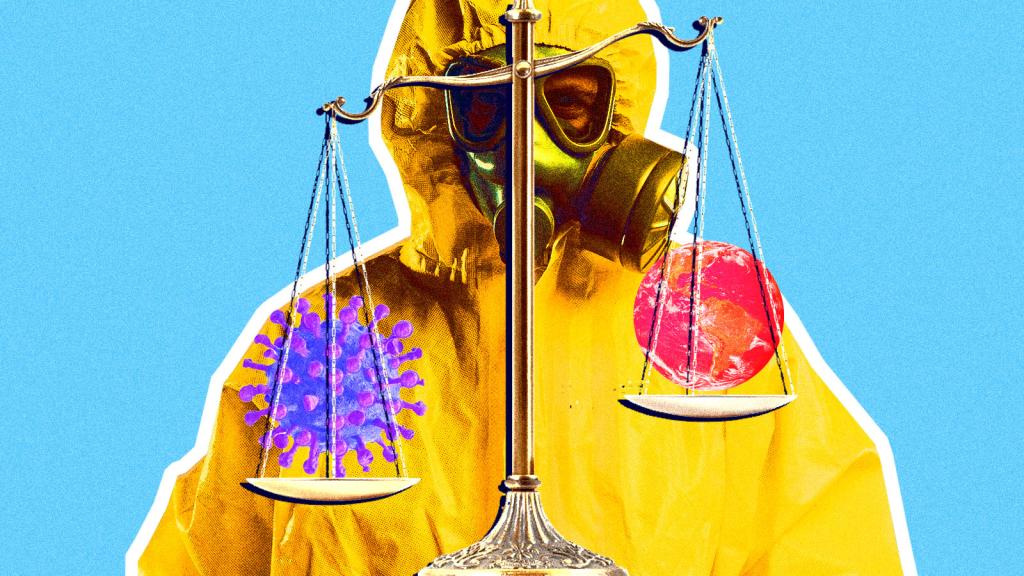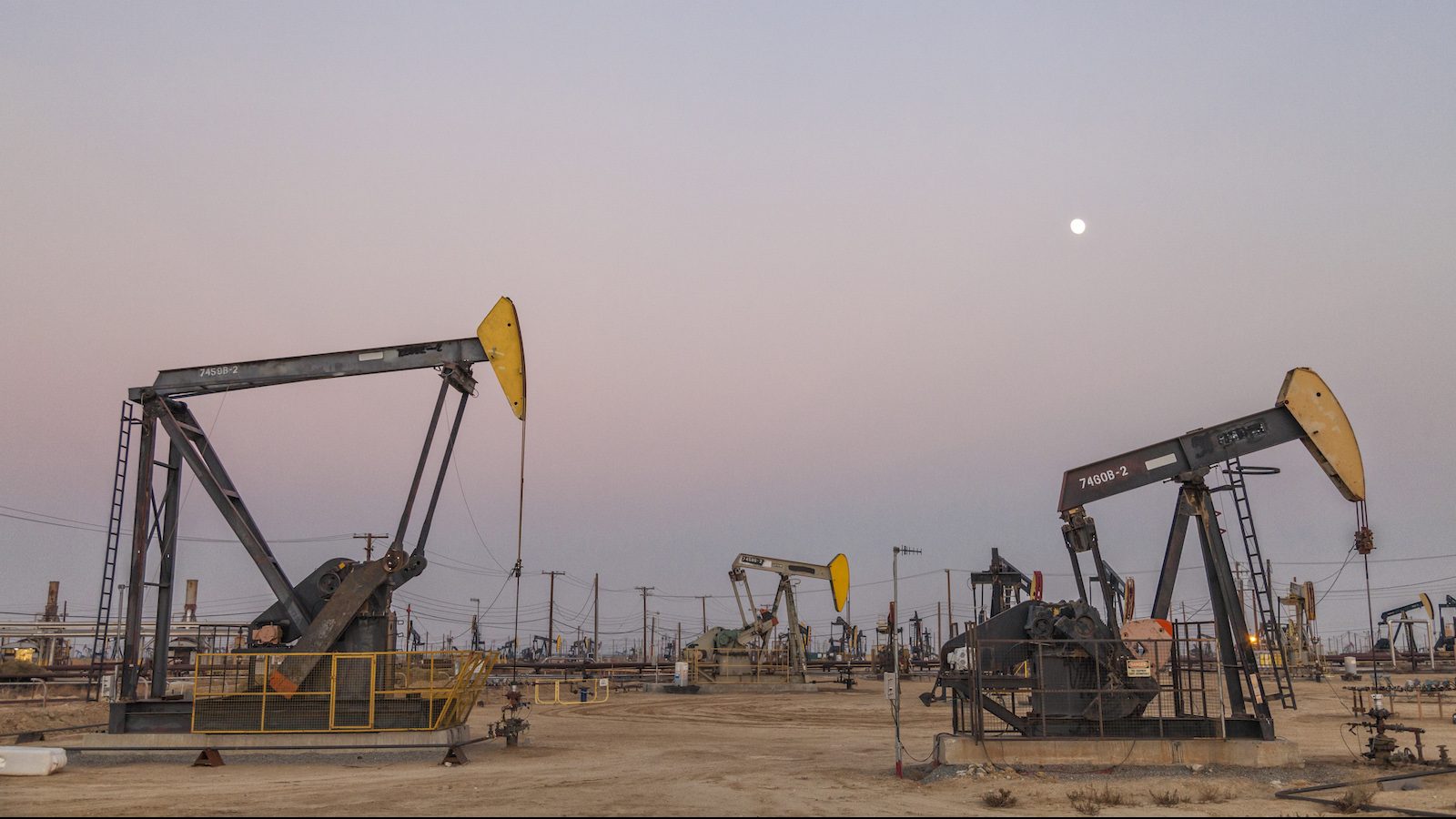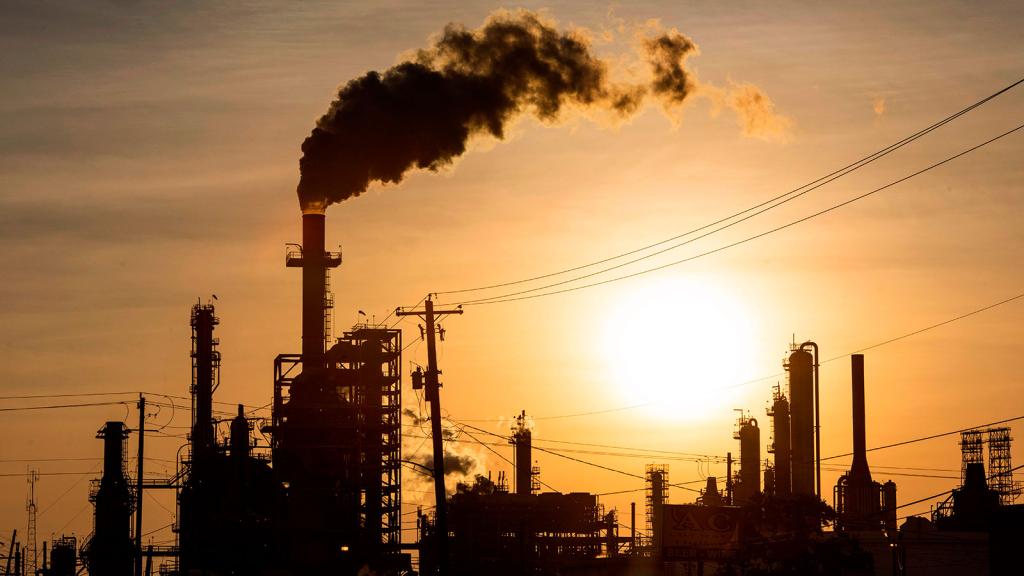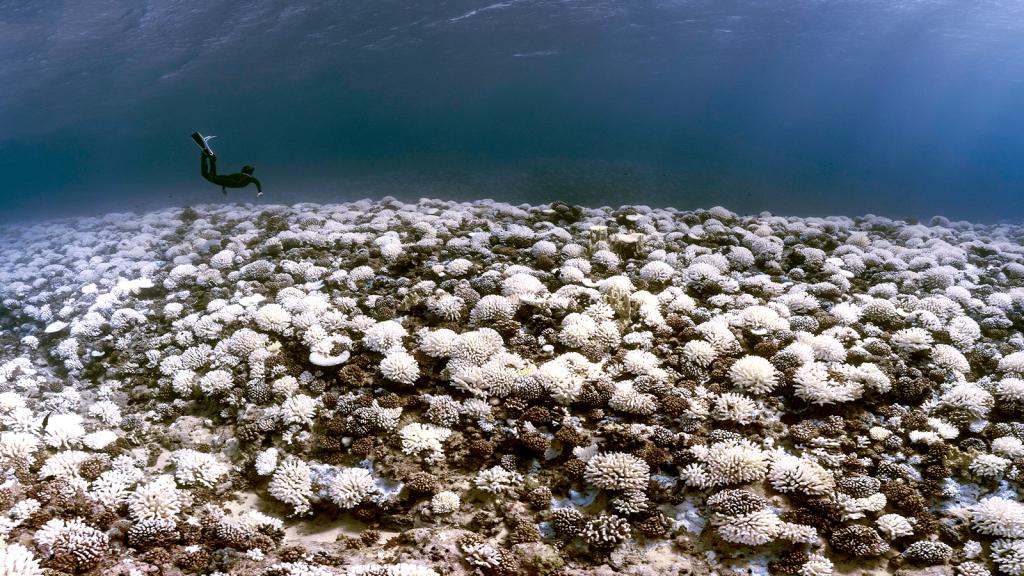California Governor Gavin Newsom was elected after promising to tackle global warming and transition the state to clean energy, but last year journalists revealed that his administration was approving fracking permits at double the rate of the previous administration. Newsom soon announced a moratorium on the approval of fracking permits across the state.
That pause remained in place into 2020 — until earlier this month, when the state was preoccupied with thousands of documented cases of the novel coronavirus and a statewide shutdown that Newsom ordered in response.
Amid a global pandemic, the scientific panel tasked by Newsom with reviewing all pending fracking applications approved 24 new fracking permits in Kern County, the heart of California’s oil country and a major agricultural hub. The decision left environmental advocates baffled.
In a region plagued by the kind of air pollution that public health experts are beginning to link to COVID-19 deaths, they questioned why California regulators would greenlight new fracking permits — especially since the state agency in charge of overseeing this process, California’s Geologic Energy Management division (CalGEM), is operating under a new mission to protect public health and safety.
Ironically, just as fracking picks back up the state is also pausing efforts to develop tougher regulations to protect those who live or work near oil and natural gas wells — a part of Newsom’s broader initiative to pull back on drilling as the state works toward achieving carbon neutrality by 2045. While the coronavirus has seemingly put those loftier goals on hold, business as usual is resuming for the state’s fossil fuel interests.
“I don’t think that there’s anyone — outside the industry — that thinks the prescription for COVID is expanding air pollution and public health threats,” said Mad Stano, program director for the California Environmental Justice Alliance (CEJA), a statewide coalition. “Just like you wouldn’t throw away your umbrella in a rainstorm, you wouldn’t toss out environmental health protections in the middle of a public health crisis.”

California Governor Gavin Newsom speaks during a news conference at the California Department of Public Health in February 2020. Justin Sullivan / Getty Images
But California’s decision to greenlight additional fracking during the pandemic is not unique. As the nation hunkers down in the fight against COVID-19, many oil and gas operators are continuing their work — despite not only nationwide social distancing measures, but also a global price crash that has the industry reeling.
Shutting down fracking, drilling, and any number of ancillary activities that support the industry could have unforeseen effects on electricity production, pharmaceutical manufacturing, and the supply chains critical for getting food to kitchen tables during the pandemic. As a result, the Department of Homeland Security and state governors have labelled the oil and gas industry an “essential” and “life-sustaining” business, exempting it from many of the restrictions placed on other businesses.
State regulatory agencies are likewise continuing to process applications to ensure that these businesses receive permits, licenses, and other authorizations they require to operate. Grist surveyed six agencies representing Texas, Pennsylvania, Colorado, New Mexico, Washington state, and New York to assess whether they’ve made changes to accommodate the fossil fuel industry’s permitting needs during the pandemic.
All six state agencies reported that applications for permits, renewals, and other authorizations are being processed at a relatively normal pace. (In some cases, they reported having to ease normal requirements for wet signatures and physical documents in order to accommodate businesses trying to implement social distancing protocols at their workplaces.)
But these measures to aid the industry are being implemented while the enforcement and compliance divisions within these agencies have scaled back routine inspections in an attempt to protect their employees from COVID-19. Additionally, in states like Pennsylvania and Montana pipeline and refinery construction are ongoing. Some agencies have canceled public hearings where stakeholders might oppose these kinds of projects or participate in environmental rule-making. Many state agencies have also suspended the processing of public information requests, further limiting the public’s ability to gather information about projects being considered in a time of crisis.
Allowing permitting and construction to continue while curtailing substantive public participation is “especially frustrating,” said Eric Schaeffer, executive director of the Environmental Integrity Project, a nonprofit founded by former EPA employees. “[They’re saying,] ‘You can’t have public meetings, but we’ll keep rolling permits out.’”
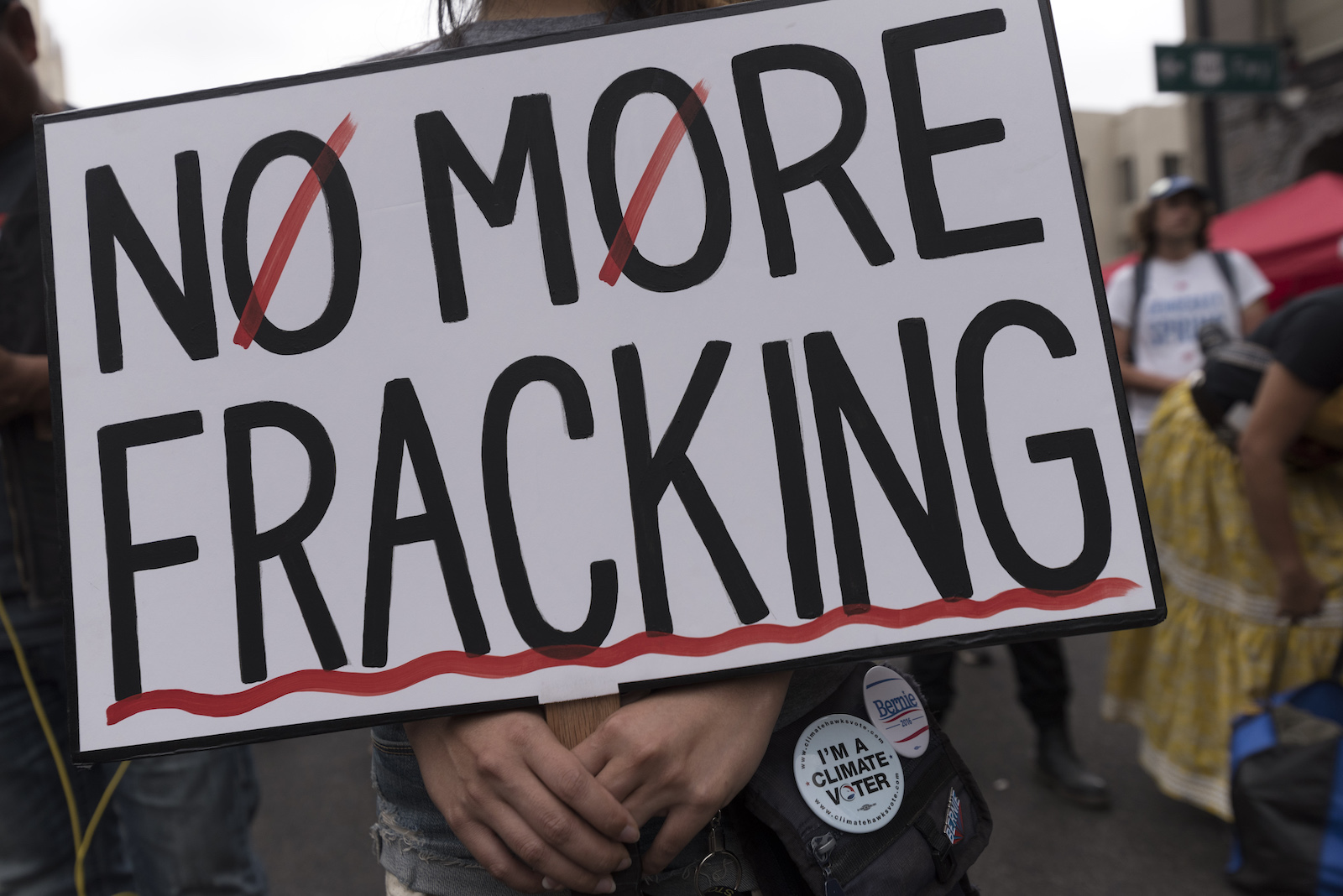
A protester holds an anti-fracking sign during a protest in Los Angeles, California. Ronen Tivon / NurPhoto / Getty Images
Business as usual
By the third week of March, every governor in the country had issued either a shelter-in-place order or announced social distancing measures. State agencies ordered their employees to telework. For regulatory agencies, that has meant closing their offices except for essential work and processing various applications for permits, licenses, and extensions online.
New Mexico’s oil and gas regulator, for instance, is allowing businesses to submit documents electronically instead of requiring physical copies to be mailed. In Texas, the onset of the pandemic does not appear to have slowed down permitting, at least in its early days: According to HuffPost, Texas’ oil and gas regulatory agency approved 30 percent more drilling permits in the first three months of this year, compared to 2019.
The state’s environmental agency has also seen an increase in the number of requests to submit applications online. In total, the Texas Commission on Environmental Quality has issued more than 2,000 permits to operate various industrial facilities since employees began working from home. While most staff are teleworking, some employees have been visiting the office in order to sort through mail, which may include application requests and other correspondence, a spokesperson said.
Despite the rapid pace of changes to the work environment, representatives for all six state agencies contacted by Grist said they haven’t seen any dramatic reductions in the number of applications they’ve been processing, though some reported relatively small decreases. In Colorado, the Department of Public Health and Environment’s air division has received almost 20 percent fewer permit applications in February and March compared to last year. But a spokesperson for the agency said that it was unclear if the downturn was due to the sudden drop in oil prices or other pandemic-related contingencies.
“We’re seeing a little bit of a slowdown across all levels,” said Adrienne Sandoval, director of New Mexico’s oil conservation division. “The crude oil price being so low is a big driver.”
Some oil and gas operators have requested changes to their permits in order to suspend operations, due in large part to extremely low prices that are making production uneconomic. Sandoval confirmed that her department has received extension requests for existing drilling permits. XTO Energy, a subsidiary of ExxonMobil, submitted an application in Pennsylvania to suspend cleanup at a well site for up to a year, citing safety issues for its employees.
“In addition to health [and] safety risks to personnel, the supply chain to obtain certain required materials (silt sock, stone, seed mix, mulch) for restoration may have limited access and availability,” the application stated. A Pennsylvania Department of Environmental Protection spokesperson said the agency had denied the company’s request but has approved 16 other requests for suspending environmental requirements due to pandemic-related contingencies.
While the ongoing permitting in most states does not come as much of a surprise, California’s decision to approve 24 fracking permits is peculiar. That’s because of Newsom’s November announcement to pause permits for fracking, which came in the wake not only of The Desert Sun’s story about the state’s doubling of fracking permits, but also of the revelation that senior managers at the state’s oil and gas watchdog agency were invested in oil companies that they were charged with regulating. At that time, Newsom also announced that the state would audit the permitting process for fracking to determine whether it complies with state regulations.
California’s decision to issue new permits after all this, in combination with the suspension of many environmental health protections at the federal level, has advocates worried that the most vulnerable communities will suffer new and intensified pollution burdens.
“This decision runs counter to common sense and their mission — and really their moral responsibility to protect communities from these significantly risky operations,” CEJA’s Stano said.
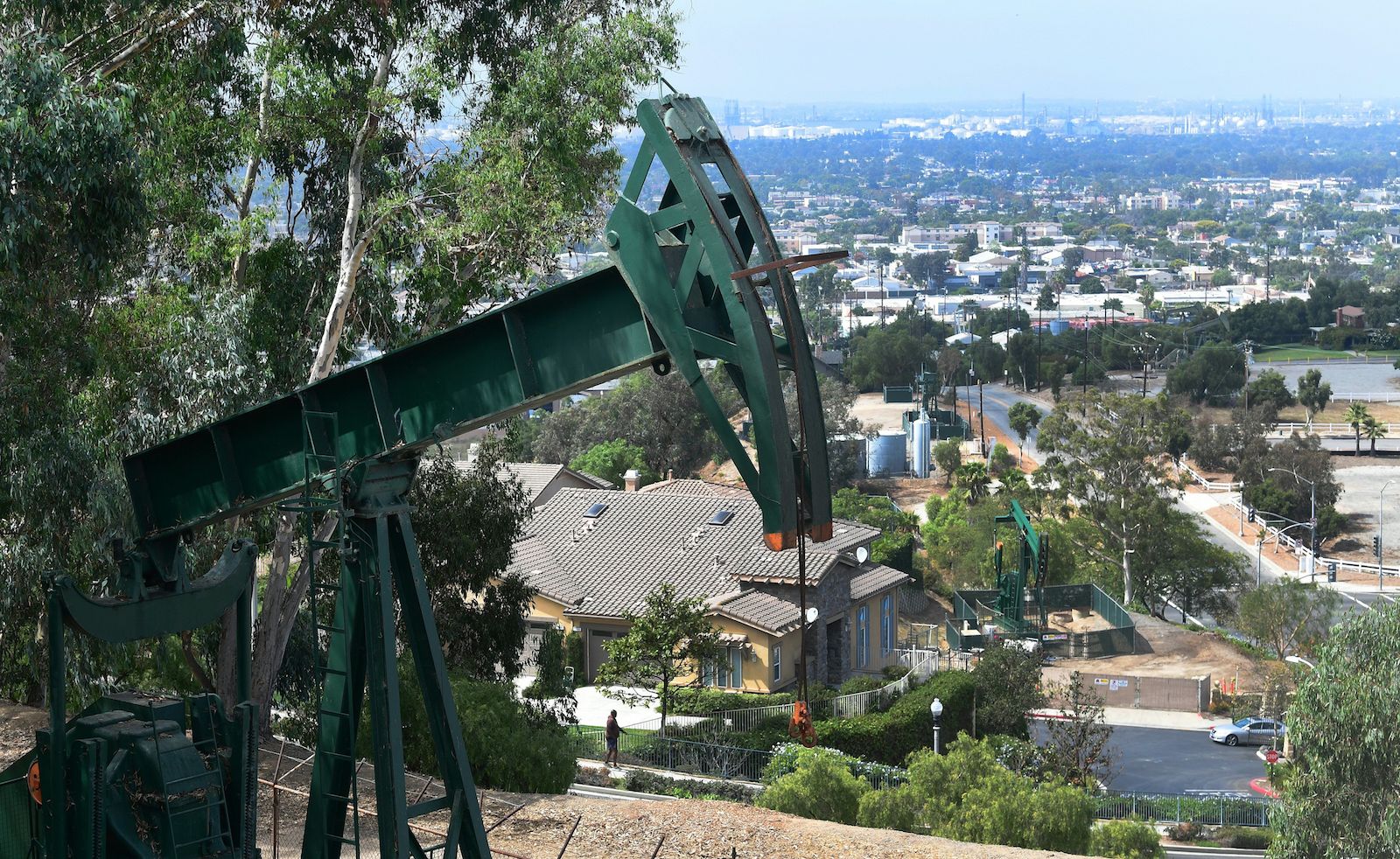
Pumpjacks in an oil well overlook the city of Signal Hill, south of Los Angeles, California. Hundreds of active oil wells in Los Angeles County sit in densely populated and mostly low-income neighborhoods. Frederic J. Brown / AFP via Getty Images
Following the controversy around the Newsom administration’s fracking record, the governor also began the process of developing tougher regulations, such as buffer zones to prohibit oil and gas drilling close to homes, schools, parks, and hospitals. However, that public rule-making process is now on hold.
Earlier this month a coalition of environmental, public health, and legal rights groups sent a letter urging the state to stay the course and keep this process on schedule. Caroline Farrell, the executive director of the Center on Race, Poverty and the Environment, highlighted the irony of the state’s approval of fracking permits while pausing the regulatory rule-making process.
“It speaks to a lack of transparency — and that they are prioritizing permitting over public health,” said Farrell. “It seems like there’s no reason to stop the public health rule-making, if they are still fully capable of issuing permits.”
California Oil and Gas Supervisor Uduak-Joe Ntuk, who heads CalGEM, said in a statement to Grist that his agency is evaluating letters submitted by the public, remains committed to providing citizens with ample opportunity to help shape the new health and safety regulations, and has extended the original April 10 public comment deadline. (A new deadline has not yet been set.)
“Strong and fair oversight of California’s oil and gas production remains at the core of the agency’s mission to protect public health and the environment,” said Ntuk.
Fever in the valley
For years, CEJA has worked to raise awareness of the public health risks of oil and gas operations in California, and the disproportionate effects that drilling has on low-income residents and communities of color. Before the COVID-19 pandemic struck, residents throughout California had to contend with some of the most polluted air basins in the country. Kern County’s agricultural workers, who have already been continuously exposed to pollutants such as pesticides and continue to labor through the pandemic, are particularly at risk.
“We’re talking about farmworker communities, and we’re adding more pollution on top of a pandemic,” said Farrell of the Center on Race, Poverty and the Environment, which is based in the county.
The number one health issue facing Kern County residents is respiratory health, according to Juan Flores, a community organizer at the Center. The county suffers high rates of asthma, and since 2008 cancer has been the most common cause of death. In addition, cases of the respiratory disease known as valley fever have spiked recently. People can contract that infection, caused by a fungus found in the soil in the southwestern United States and other parts of the world, by breathing in tiny fungal spores from the air. While most people don’t get sick from breathing these spores, certain groups are at higher risk and can become severely ill and die, according to the Centers for Disease Control and Prevention. In 2018, the disease killed six Kern County residents and infected almost 3,000 more, which public health officials said was the most diagnosed cases in nearly 30 years.
The cumulative health effects of agricultural pesticides, greenhouse gas emissions from oil extraction, and freeway pollution have long been a dangerous combination, said Flores. Then the pandemic hit.
“We are predicting that a lot of the deaths related to COVID-19 in Kern County are going to be patients who already suffered from valley fever,” Flores told Grist, “because once you get valley fever your lung capacity reduces about 20 to 30 percent.”
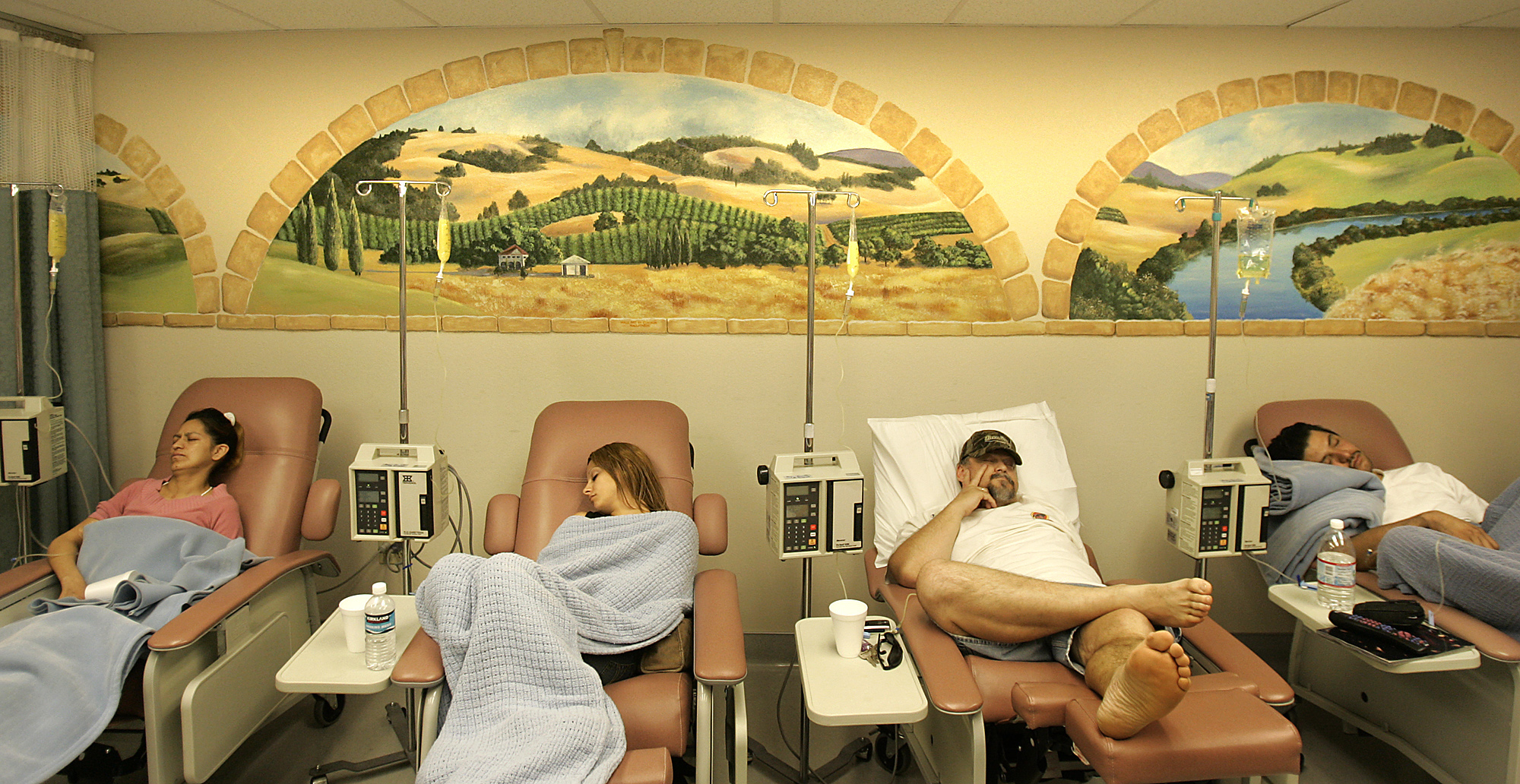
Patients in California undergo treatment for valley fever. Brian Vander Brug / Los Angeles Times via Getty Images
A recent Harvard University study found a connection between elevated COVID-19 death rates and air pollution, specifically elevated levels of the particulate matter known as PM 2.5. The research suggests that people in counties with higher levels of PM 2.5 are more likely to die from the virus when it hits their communities.
California’s timing in approving the fracking permits could not be worse, said Colin O’Brien, a staff attorney with the national environmental law organization Earthjustice. O’Brien reviewed the reports that paved the way for the approval of the 24 new permits. Those reports were issued by the Lawrence Livermore National Laboratory, which Governor Newsom enlisted to ensure that standards for public health, safety, environmental protection were being met. CalGEM has said that the permitting process review by the laboratory was rigorous, but O’Brien questioned this.
“The national lab … didn’t broadly assess environmental impacts. They didn’t institute new requirements for health protections. They were just strictly making sure that these permits complied with the weak rules that are already on the books,” O’Brien told Grist.
The laboratory’s own report describes past permit reviews as inadequate and lacking transparency, and the laboratory required the new applicants to submit more information this time around. Ultimately, however, the new permits were reviewed under the same parameters as past permits, according to O’Brien.
“And that’s unfortunate because now is the worst time to be authorizing more fracking,” O’Brien said, “not only because oil prices are so low and this seems unnecessary, but even more importantly because we know that air pollution … makes communities like Kern County more vulnerable to COVID-19.”
Lisa Lien-Mager, a spokesperson for the California Natural Resources Agency, said in a statement to Grist that the third party evaluation was meant to ensure that permit applications were complete and to verify that existing standards were followed. The laboratory required that companies present “a level of detail and data transparency not previously required anywhere in the United States,” according to Lien-Mager. Those lessons will be incorporated into CalGEM’s permit reviews going forward, as will the results of an audit by the state’s Department of Finance, which is ongoing and expected to be completed later this year.
“We remain committed to strong, fair and transparent oversight of oil and gas production in California,” said Lien-Mager.
As long-standing pollution burdens exacerbate the impact of COVID-19 in vulnerable communities, the government’s goal should be stepping up enforcement of the industries that contribute to that burden, said Patrice Simms, vice president for healthy communities at Earthjustice.
“The appropriate response in those circumstances is to recognize we know that this is a community in danger,” said Simms. “What are we going to do to make sure we — we being [the Environmental Protection Agency] and federal and state regulatory authorities — are doing everything possible to make sure that those communities are as protected as they can possibly be?”
What are the polluting industries in your neighborhood doing during the pandemic? Drop us a note if you have a story idea or tip for us to look into.
